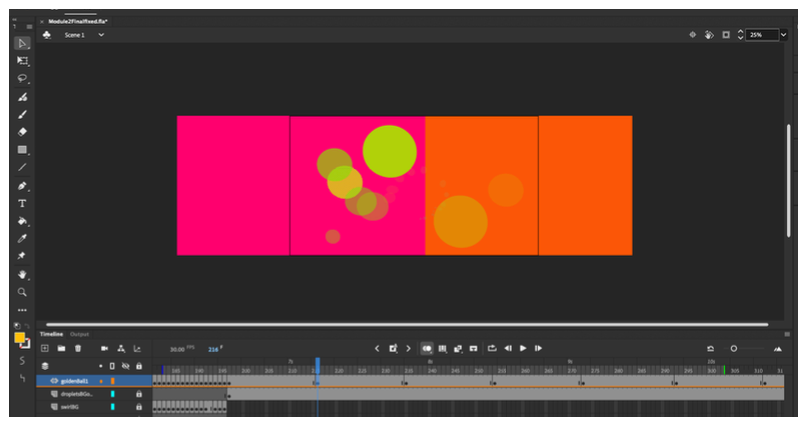Create Your First Project
Start adding your projects to your portfolio. Click on "Manage Projects" to get started
goodVibes
A short animated visual exploration of the song "Twas" by Jalen Baker. Created as a project for an arts education course in digital arts and storytelling.
Entitled goodVibes, this is a pun on both the use of vibraphones in the song and how an individual’s aura impacts the world around them. As the golden ball (i.e. human) moves through life, they leave behind a trail of colour, representing their influence at each step. In the first repeated sequence, they can only “see” what’s in front of them– a bleak path of colourless stairs surrounded by darkness. In the second sequence, the ball is no longer alone, and can finally “see” the colourful impact they’ve made through their repeated actions, returning to the now pink and orange steps.
Creative Process
For this project, I incorporated my appreciation for the hand-drawn optical illusions shown in the chase scene of Richard Williams’ The Thief and the Cobbler. Rewatching that scene reminded me of how cohesive music and captivating visuals can enhance digital storytelling. From class, An Optical Poem by Oskar Fischinger and Dots by Norman McLaren both also inspired me to animate an abstract visualization of a song. Growing up playing piano and flute, my musical background allows me to hear the intricate note patterns, which later helped with timing the animation. I chose the song “Twas” by Jalen Baker because of its layered rhythms that help me to focus while studying. I visualized the song from different perspectives, as if the camera positioning was changing– something that I pay attention to whenever I watch films.
I enjoyed bringing my sketches to life by: creating backgrounds in Photoshop, importing them as PNGs into Animate, then creating the ball object for motion tweening. Based on my experience with drawing in Animate for the studio exercises, I chose to use Photoshop instead because I liked being able to layer, group, and fine-tune adjustments (e.g. free transform, double-clicking thumbnail for colour switching). The staircase scene was a bit challenging, since I had to align each rectangle, using an image as a guide, and then also colour each stair, saving them as separate PNGs using a consecutively numbered naming convention. There were 51 stairs in total, and I almost lost count at the end!
I tried to learn and apply classic tweening for the pink-orange sequence but settled for frame-by-frame instead for more precise control of object positioning. I also cut a bunch of in-between frames in the spiral scene to make it shorter to match the song. The onion skin tool became my favourite since it looked cool to see the object’s motion path across the frames. I saved my project files onto the server and also on OneDrive, downloaded it onto my phone and combined it with the song in iMovie to double check the timing.
In total, this project took me 14 hours over the course of 4 days to plan, execute, and edit this from start to finish. I am incredibly proud of this project and am excited to showcase it, despite the initial challenges with learning how to use Animate. Regarding the principles of animation, this project invokes: staging, straight-ahead-action, arcs, timing, exaggeration (using size), and appeal. As for the elements of art, my animation also uses: shape, value, space, and colour. And lastly, for the principles of design, it showcases: visual rhythm, contrast and variety of colour, emphasis, proportion, harmony (in repeated sequences), and movement.











